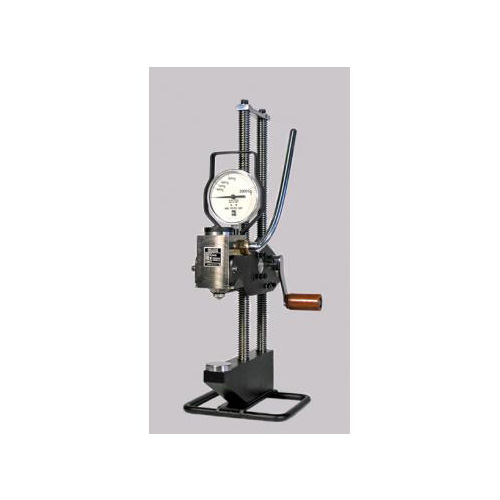Hardness Testers - King Tester <---
The King Portable Brinell Tester
With the advent of new requirements for quality control, accurate and reliable hardness testers are needed today more than ever. The King Brinell is designed to make impressions that are used to measure the hardness of a metal. A universally recognized tester, the King portable Brinell has a number of advantages.
-
Permanence - Impression can be checked and rechecked at any time.
-
Accuracy - Calibrated accurate to 1/2 of 1% of load. Can be used for higher loads up to 3,000 kg.
-
Breaks through surface heat treatment to get to the core of the material.
-
Durability - Some King Portable Brinell testers have been working for over 60 years.
-
Versatility - Can be used in virtually any position: right side up, upside down or sideways. Take the tester to the metal, not the metal to the tester.
On the market for over 60 years, King Brinell hardness testers are lightweight, easy to maneuver and require only one operator, making them ideal for use as portable or bench units. Versatile enough to test virtually any size and shape of metal specimen, King testers are easy to use. The operator simply places the specimen between the anvil and the test head, cranks the test head down onto the specimen, locking the tester in place, closes the pressure release valve, and pulls the hydraulic lever until the desired load is reached.
The tester applies up to a 3,000 kg load on a 10mm ball, making a lasting impression, which is available for re-reading at any time. A by-pass valve is automatically activated at the calibrated load, eliminating the chance of overloading. The impression is then read and recorded by the operator using a Brinell microscope such as the King deep reading microscope or a Kingscan automatic Brinell microscope. The King Portable Brinell meets all international standards for Brinell testing including ASTM E-110, British Standard #240, Pt. 2, Sect. 1 and JIS Standards, and is calibrated to 1/2 of 1% of load on equipment traceable to NIST Standards.
In the pop up window you can download the Catalog (if it is not shown, please refresh or click F5)
| |




